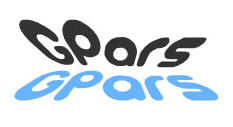1 Introduction - Reference Documentation
Authors: The Whole GPars Gang
Version: 1.0.0
1 Introduction
The world of mainstream computing is changing rapidly these days. If you open the hood and look under the covers of your computer, you'll most likely see a dual-core processor there. Or a quad-core one, if you have a high-end computer. We all now run our software on multi-processor systems. The code we write today and tomorrow will probably never run on a single processor system: parallel hardware has become standard. Not so with the software though, at least not yet. People still create single-threaded code, even though it will not be able to leverage the full power of current and future hardware. Some developers experiment with low-level concurrency primitives, like threads, and locks or synchronized blocks. However, it has become obvious that the shared-memory multi-threading approach used at the application level causes more trouble than it solves. Low-level concurrency handling is usually hard to get right, and it's not much fun either. With such a radical change in hardware, software inevitably has to change dramatically too. Higher-level concurrency and parallelism concepts like map/reduce, fork/join, actors and dataflow provide natural abstractions for different types of problem domains while leveraging the multi-core hardware.1.1 Enter GPars
Meet GPars - an open-source concurrency and parallelism library for Java and Groovy that gives you a number of high-level abstractions for writing concurrent and parallel code in Groovy (map/reduce, fork/join, asynchronous closures, actors, agents, dataflow concurrency and other concepts), which can make your Java and Groovy code concurrent and/or parallel with little effort. With GPars your Java and/or Groovy code can easily utilize all the available processors on the target system. You can run multiple calculations at the same time, request network resources in parallel, safely solve hierarchical divide-and-conquer problems, perform functional style map/reduce or data parallel collection processing or build your applications around the actor or dataflow model.The project is open sourced under the Apache 2 License . If you're working on a commercial, open-source, educational or any other type of software project in Groovy, download the binaries or integrate them from the Maven repository and get going. The way to writing highly concurrent and/or parallel Java and Groovy code is wide open. Enjoy!1.2 Credits
This project could not have reached the point where it stands currently without all the great help and contribution of many individuals, who have devoted their time, energy and expertise to make GPars a solid product. First, it is the people in the core team who should be mentioned:- Václav Pech
- Dierk Koenig
- Alex Tkachman
- Russel Winder
- Paul King
- Jon Kerridge
- Hamlet d'Arcy
- Hans Dockter
- Guillaume Laforge
- Robert Fischer
- Johannes Link
- Graeme Rocher
- Alex Miller
- Jeff Gortatowsky
- Jiří Kropáček
